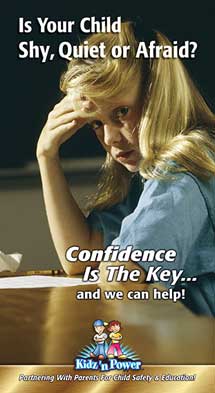
“Stranger Danger” Lessons Alone
Don't Protect Children
Part Two
“Parents can teach about personal safety without causing unwarranted fear,” says Dr. Broughton.
What to teach instead:
- Children should know their name, address and phone number (with area code) so, if lost, they can be reunited with their family. Older children should know parents' work numbers.
- Away from home, older children should always be with a friend, always tell an adult where they will be, and say “no” if they feel threatened or uncomfortable.
- Children need to know that appropriate strangers – store clerks or police officers – can offer assistance if they are lost or need help.
- Parents need to listen, and respect their children's feelings. Children can sense unease in inappropriate relationships. They'll likely share their concerns if parents routinely take all of their concerns in life seriously rather than downplaying or shaming them.
- Children need to know that they do not need to kiss, hug, touch or sit on the lap of anyone, relative or not, if they do not wish to. This respect for their wishes translates into self–respect and the ability for children to say no to unwanted contacts without generating fear.
- Parents need to supervise children who use the Internet. Although still relatively uncommon, the practice of pedophiles and child molesters approaching children on the Internet is occurring more frequently.
- Parents need to keep reinforcing safety messages through middle school and high school. According to the U.S. Department of Justice, most victims of nonfamily abductions were 12 years or older (58 percent). Most were girls (65 percent).
- Parents should realize the limitations of participating in programs where children are fingerprinted or otherwise identified. These programs can frighten children and raise fears in adults without giving perspective on the real nature or risk of abduction.
- Parents should keep on hand a high–quality recent photo of each child, such as a school photo. Law enforcement officials consider photos the best tool in finding missing children.
- Parents should promptly report a missing child. The Amber Plan, the national program to immediately flood a region with news of an abduction, is credited with helping to recover more than 130 children since it started two years ago.
“None of these safety approaches needs to be taught specifically as safeguarding against abductions – with all its overtones of danger and threat,” says Dr. Broughton. “Instead, safety should be taught as common sense so children can learn confidence and independence.”
Statistics:
Non-Family Abductions
- In 1999, more than 50,0000 children and adolescents were taken by nonfamily members by physical force or coercion for at least one hour.
- Ninety–one percent of non–family abductions lasted less than a day, with 29 percent lasting two hours or less.
- Classic non–family kidnappings pose the greatest risk of death or serious harm. About 100 children were kidnapped by non–family members in 1999.
(Source: U.S. Department of Justice National Incidence Studies of Missing, Abducted, Runaway, and Thrownaway Children, 2002)
Family Abductions
- 203,900 children each year are victims of family abductions, where the child is taken by a non–custodial parent.
- 24 percent of these abductions lasted one week to one month. Police were contacted in 60 percent of the cases.
(Source: U.S. Department of Justice National Incidence Studies of Missing, Abducted, Runaway, and Thrownaway Children, 2002)
Is your child going to become the next statistic?
Now is the time to do something. It only takes an instant for a child to be injured, abducted or to become the next statistic. You need to empower your children with “Powerful knowledge, skills & experiences” to help them learn that they do have the ability to protect themselves and stay safe.


